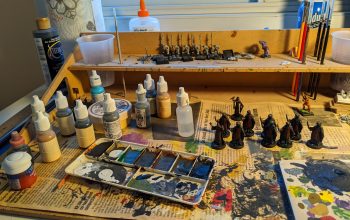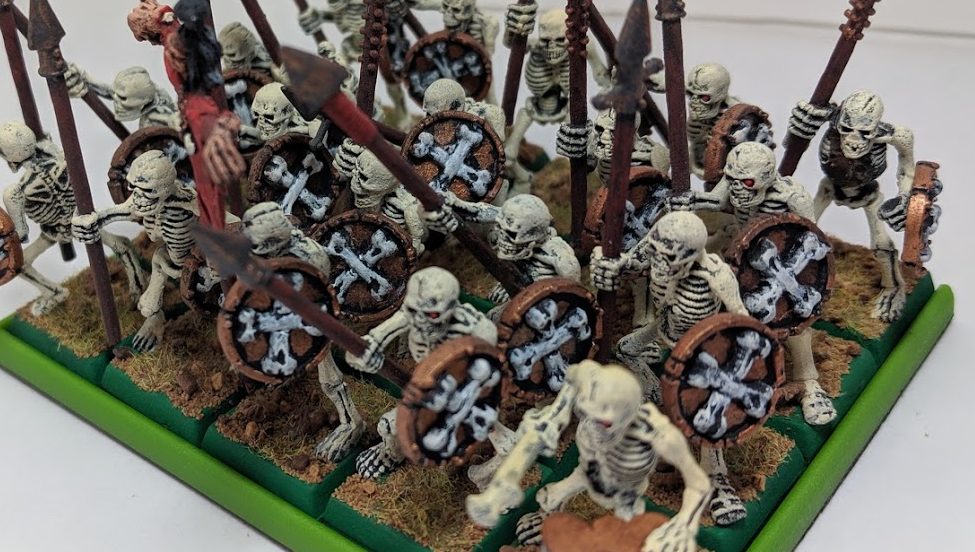I love miniatures. I love painting them. I love creating large and detailed scenery in which to place them. In fact, I’m having some friends over today for a miniature painting gathering today. So it might come as a surprise to some that I barely use them in my games.
In fact, I have a coworker who is into 4th edition, and he simply couldn’t comprehend the idea of playing without minis. So much so that when I was running my lunch time game he stopped by to watch for a little while just to see how on earth it could be done. Unfortunately he got bored after ten or fifteen minutes of no combat at all and left. I don’t blame him, I always thought that however much fun any RPG session may be to play, it’s always dull to watch. I think the fact that combat takes such little time that you can have long periods of non-combat in your games is yet another testament to what’s so great about old school play, but that’s a topic for another day.
So how do I do it? OK, here’s what I do use miniatures for. I have a mini on the table for each player and that’s it (no monster minis). We use them to display marching order when going through dungeons. When in combat, I ask them to arrange the minis into front rank and rear rank. That sort of implies a much more coordinated combat than I really imagine is happening. Basically, I assume combat is a chaotic affair with the combatants constantly moving and circling each other in a confused mass. How could it be otherwise with a full 10 seconds to every round?
The front rank represents those players that are in the thick of things, face to face with one or more enemies in melee combat. The back rank are those that are intentionally trying to stand back and out of harms way, perhaps to cast the odd spell or attempt to pick out targets with a ranged weapon (a dangerous option, as I do have rules for accidentally hitting a friend who is in melee). Combatants can switch targets at their whim within the melee from one round to the next, and it is only moving from front rank to back (or all out fleeing) that has potential for danger. Though for the most part I allow folks to flee combat without penalty other than possibly being chased down or shot at with ranged weapons.
That’s basically it. I generally don’t worry about things like range, assuming all ranges are medium. I think of the combatants in clusters for who gets affected by area of effect spells. The front rank is one cluster, the back another. Sometimes the monsters will also have a back rank for a third cluster. In some rare situations the melees might break apart into two or more separate groups, in which case I’ll just ask that the front rank of players get split visually into one or more groups to keep it straight.
OK, sometimes I do miss the big reveal of pulling out the perfect mini for the bad guys the players are about to face off against. Though that’s countered by never feeling bad having to substitute skeletons for kobolds or some other monster I have no minis for. But it also just makes things go that much faster, which I think is an excellent thing. We can have many combats in a single night’s game, and still have ample time for exploration, NPC interaction, or other activities. Don’t get me wrong, combat is exciting and I like to have plenty of it in each game, but I think the excitement dwindles when it takes more than fifteen minutes to resolve.


1 thought on “Little Men”